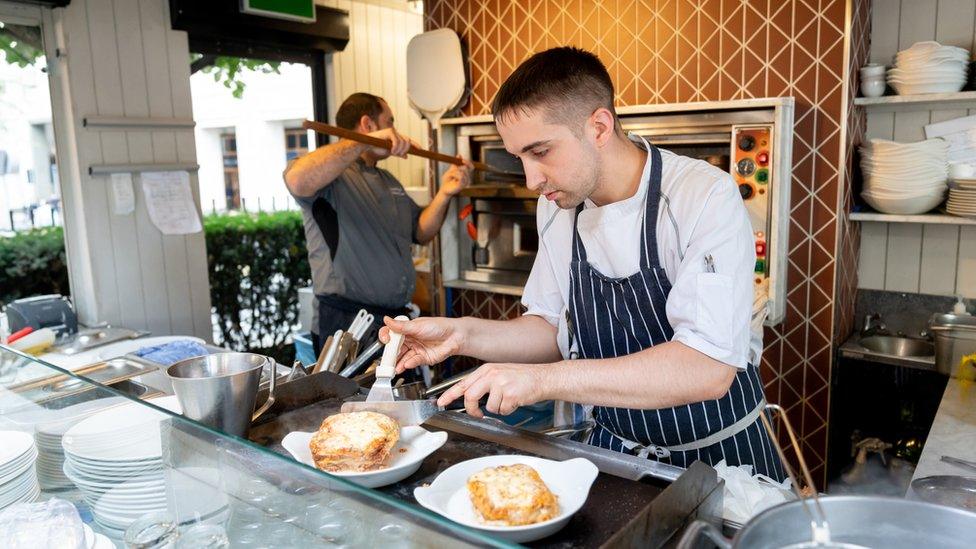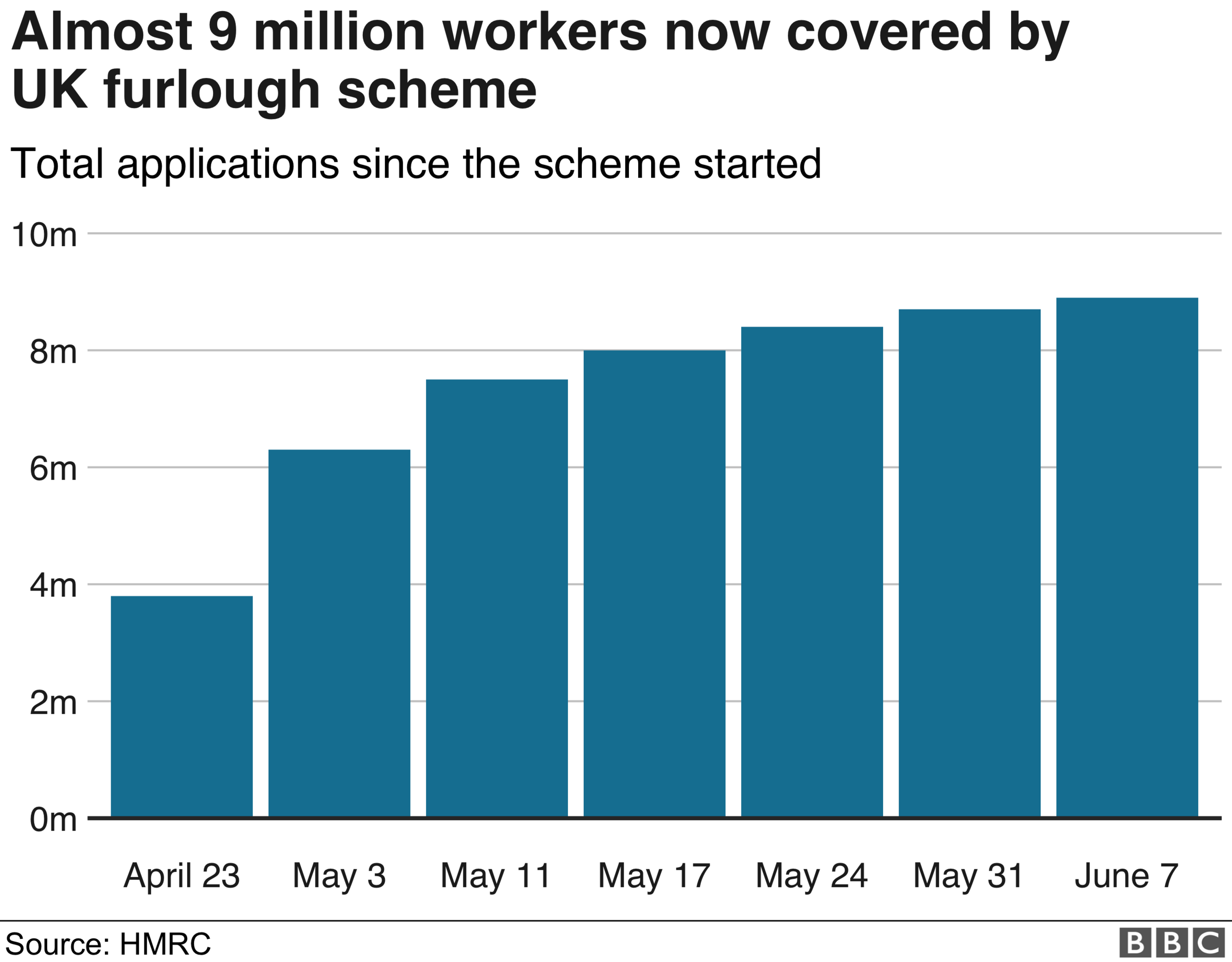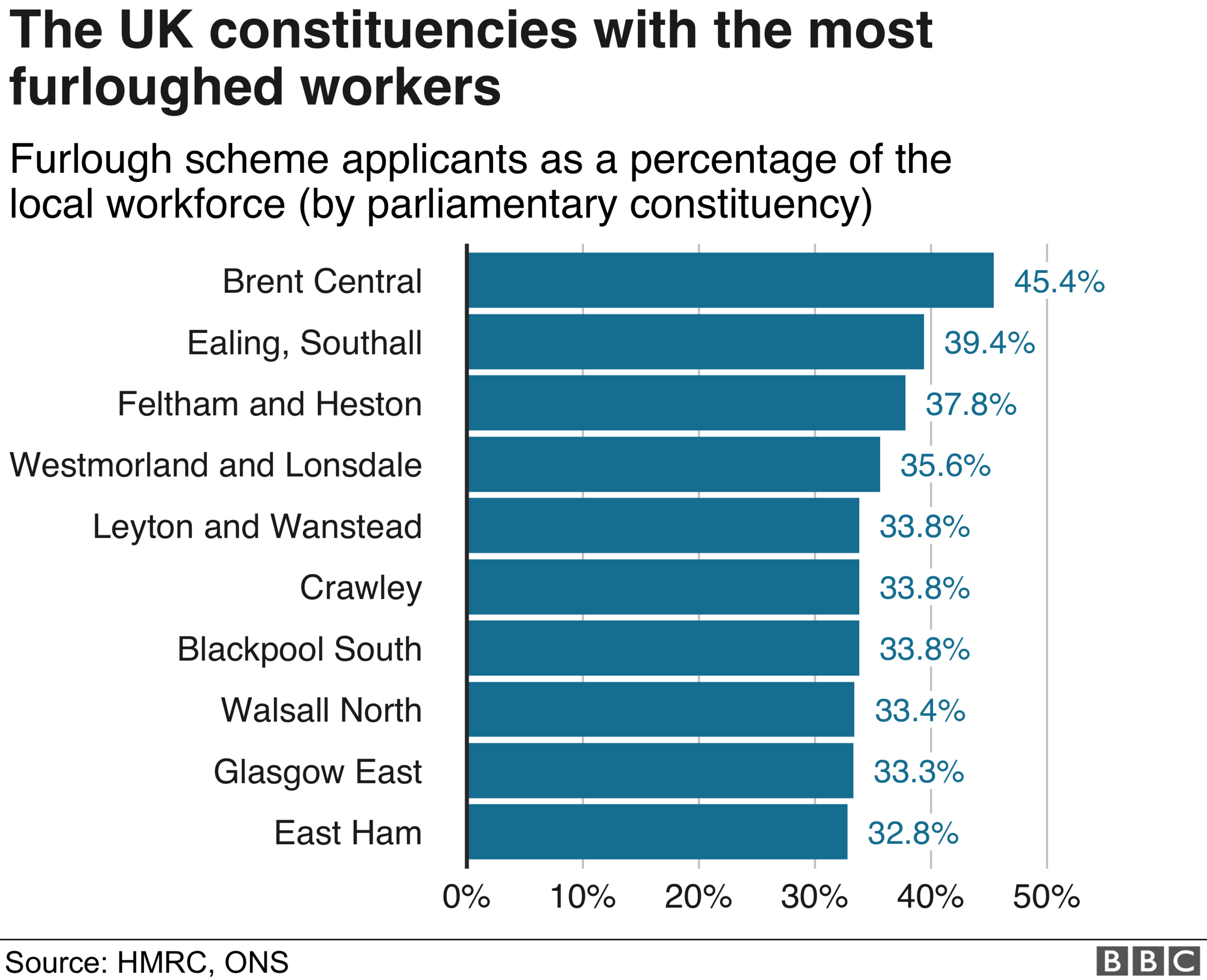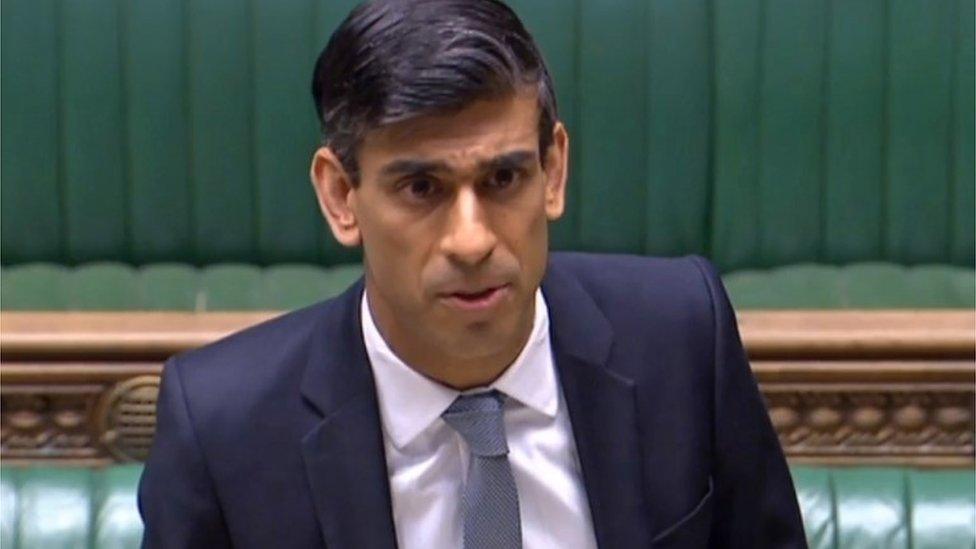Which areas have the most furloughed workers?
- Published
- comments

The Coronavirus Job Retention Scheme was created less than three months ago, but has already grown into perhaps the most expensive intervention by a British government to support the jobs market.
Just under nine million jobs are currently having their wages paid by the taxpayer through the pandemic shutdown, and for the first time, the HMRC has produced breakdowns, external of precisely where and which employers are using the scheme.
Shops and their suppliers are the biggest users of the scheme, claiming £3.3bn of £17.5bn total to furlough 1.6m workers.
Then it's hotels and restaurants, claiming £2.6bn to park a further 1.4m workers.
That is followed by manufacturers whose factories have been shut claiming £2.1bn for 831,000 workers.
Everything from mining to education, health, waste, and estate agents are represented.

By region, the pattern is of course the more employees, the greater the use of the scheme.
Two million jobs in London and the South East, and 628,000 in Scotland, have been funded by the scheme.
Perhaps the most fascinating data is the breakdown by council and parliamentary constituency.

Almost all of the 650 MPs in the UK have more than 10,000 constituents who have been furloughed.
It is an average of 13,000. But within that there are considerable variations.
Mainly London constituencies with larger populations of employed people top the list, with West Ham having 29,300 furloughed jobs.
Some very interesting patterns emerge if this data is compared with the number of jobs in the constituency.
Nearly half of jobs in Brent Central in North West London - 45.4% - are furloughed, paid for by the taxpayer.
Feltham and Crawley, close to Heathrow and Gatwick Airports, are in the top 10 too.
But Glasgow East, Blackpool South and Westmorland and Lonsdale in Cumbria are also in the top 10.
These figures show just how far spread is the reach of this scheme, and perhaps, just why it had to be extended by the chancellor into the autumn.
- Published9 June 2020

- Published30 September 2021

- Published12 May 2020

